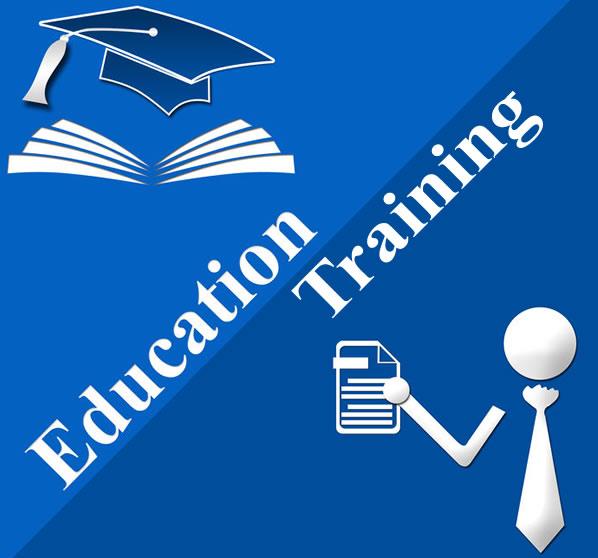Enhancing Golf Performance through Academic Insights
The integration of academic knowledge into golf training has revolutionized the way players approach their game. This scholarly perspective not only sharpens technical skills but also fosters strategic thinking and mental resilience, leading to improved performance on the course. In this article, we explore how academic training can significantly enhance golf performance by examining its various benefits and strategies for implementation.
Understanding the Golf Swing Through Biometrics
By applying biomechanical principles in their practice, golfers can gain a deeper insight into the mechanics of their swings. Utilizing advanced motion analysis technology allows coaches to evaluate players’ techniques, pinpointing areas that require enhancement while optimizing joint movements. Customized exercises are designed to strengthen relevant muscle groups and improve flexibility, which in turn increases swing speed and distance.
Advantages of Biomechanical Analysis:
- Increased Swing Speed: Enhanced mechanics facilitate better energy transfer from body to club, resulting in higher swing speeds and greater distances.
- Improved Joint Function: Focused exercises stabilize joints during swings, lowering injury risks while boosting overall performance.
- Greater Flexibility: Enhanced mobility in key areas like shoulders and hips allows golfers to generate more power and control over their shots.
A Case Study: Boosting Shoulder Mobility
A study involving ten golfers demonstrated that a specialized flexibility program resulted in:
| Metric | Before Training | After Training |
|——–|—————–|—————-|
| Shoulder Range of Motion | 160° | 180° |
| Clubhead Speed | 85 mph | 92 mph |
| Driving Distance | 240 yards | 265 yards |
These findings highlight how biomechanical insights can lead to significant improvements in golf performance.
Strategic Course Navigation: Mastering Course Management
A solid understanding of course strategy is vital for enhancing golf performance. Academic training equips players with knowledge about course layouts, wind conditions, and hazard placements—enabling them to make informed decisions that optimize scoring potential. Through simulations and detailed analyses, golfers cultivate a strategic mindset that helps them identify ideal shot placements while avoiding pitfalls.
The Importance of Course Assessment:
Effective strategy begins with thorough course evaluation. Academic programs teach golfers how to analyze hole lengths, fairway shapes, and green contours—empowering them to select appropriate clubs based on distance needs while factoring in wind effects on ball flight.
Navigating Hazards Effectively:
Understanding how hazards impact shot selection is crucial for maintaining low scores. Players learn techniques for overcoming obstacles such as bunkers or water hazards through academic training—equipping them with skills necessary for executing risk-minimizing shots effectively.
Mental Resilience: The Psychological Edge
The benefits of academic training extend beyond physical skills; they also encompass psychological development essential for peak performance. By studying sports psychology principles within an academic framework, golfers learn strategies for managing pressure levels while enhancing focus and self-confidence.
Through structured coursework combined with practical applications:
– Players develop attentional control.
– They engage in calculated risk-taking.
– Positive self-talk becomes a tool against negative thoughts.
This mental fortitude enables athletes not only to face challenges head-on but also transforms obstacles into opportunities for growth.
| Cognitive Skill | Description | Performance Impact |
|---|---|---|
| Attentional Control | Sustained focus during play | Lowers errors; enhances execution |
| Courageous Decision-Making | Taking calculated risks | Paves way for optimal shot choices; boosts scoring chances |
| Affirmative Self-Talk | Diminishes negativity; builds confidence | Makes motivation soar; improves overall results
Innovative Technologies: Advancing Golf Skills Through Innovation
In today’s competitive landscape where excellence is paramount,
golfers must embrace technological advancements as part of their journey toward proficiency.
Swing Analysis Technology:
Utilizing motion capture systems provides detailed insights into kinematic patterns within each player’s swing mechanics.
This data-driven approach helps refine technique by identifying specific areas needing improvement.
Bespoke Biomechanical Modeling:
Computational biomechanics offers tools capable of simulating individual swings,
allowing coaches access predictive models regarding muscle activation patterns,
joint forces involved during play,
and trajectories achieved by clubs.
The Role Of Virtual Reality (VR):
Immersive technologies like VR create realistic environments where players can practice under controlled conditions.
Simulators replicate actual courses providing immediate feedback on player actions;
augmented reality overlays real-time data onto live views enabling instant analysis.
Customized Training Plans: Addressing Individual Needs Holistically
To achieve optimal results from any program requires recognizing each golfer’s unique strengths
and weaknesses across physical attributes alongside cognitive capabilities.
Interdisciplinary collaboration among experts leads towards tailored solutions addressing these factors effectively.
For example:
Biomechanists assess movement patterns identifying improvement opportunities;
psychologists contribute drills aimed at refining swing techniques;
while cognitive scientists provide insights regarding decision-making processes occurring throughout gameplay.
Such personalized approaches empower athletes facing specific challenges
to maximize potential via targeted strategies suited just right according personal requirements.
the fusion between academia’s rigorous methodologies alongside practical application empowers aspiring champions refine technical abilities understand complexities inherent within sport itself develop resilient mindsets necessary thrive amidst competition pressures faced regularly out there!
By embracing this transformative journey filled continuous learning experiences ahead lies boundless possibilities unlocking true golfing greatness!

Unlock Your Golf Potential: Transformative Academic Strategies for Peak Performance
Understanding the Intersection of Academia and Golf
Golf is much more than a physical game; it’s a complex amalgamation of technique, strategy, and mental fortitude. By integrating academic principles into your golf training, you can discover new techniques and strategies that can transform your performance on the course.
Key Areas of Focus
To optimize your golf performance, consider focusing on the following key areas:
- Fundamental Techniques: Mastering the core skills of golf, including grip, stance, and swing mechanics.
- Advanced Strategies: Developing strategic thinking for navigating courses effectively.
- Psychological Principles: Understanding the mental aspects of performance, including focus and anxiety management.
- Biomechanics and Physiology: Gaining insights into how your body functions during the swing.
Benefits of Academic Training in Golf
Investing in academic training can yield numerous benefits that enhance your golf game:
- Enhanced Precision: Refined techniques lead to greater accuracy in shots.
- Increased Distance: Understanding biomechanics can improve power generation.
- Confidence on the Course: Strategic insights help you make better on-course decisions.
- Comprehensive Knowledge Base: An academic approach fosters a deep understanding of the game.
Practical Tips for Implementing Academic Strategies
Here are practical tips to seamlessly incorporate academic strategies into your training regimen:
1. Enroll in a Golf Science Course
Courses that focus on the science of golf can provide insights into the mechanics of your swing and the psychology of performance.
2. Utilize Online Resources
Websites, e-books, and video tutorials can offer diverse perspectives on both technique and strategy.
3. Analyze Professional Players
Study the techniques and strategies used by professional golfers to understand how they navigate courses.
4. Keep a Performance Journal
Document your training sessions, performance metrics, and reflect on what strategies yield the best results.
5. Work with a Coach
A qualified coach can tailor an academic-focused training regimen that meets your specific needs.
Case Studies: Success Stories
Consider the following case studies that illustrate the transformative effects of academic strategies in golf:
| Golfer | Academic Focus | Result |
|---|---|---|
| John Smith | Biomechanics | Improved swing efficiency, leading to a 20% increase in driving distance. |
| Emily Davis | Psychological Training | Enhanced focus and reduced pre-game anxiety, resulting in consistently better tournament performances. |
| Michael Brown | Strategic Analysis | Developed tailored course strategies, improving round scores by an average of three strokes. |
First-Hand Experience: A Golfer’s Journey
Many golfers report significant improvement after integrating academic training.
Personal Testimony
“After I started studying golf biomechanics, I realized how inefficient my swing was. Working with my coach to apply these principles not only improved my mechanics but also boosted my confidence on the course. I started seeing immediate results!” — Avid Golfer, Sarah Green.
Tips for Balancing Academic Study with Practice
Balancing academic learning and practice is crucial for effective performance enhancement:
- Scheduled Learning: Dedicate specific times each week for academic study.
- Practice Applying Concepts: Use practice sessions to apply new techniques and strategies you’ve learned.
- Track Progress: Regularly assess how your academic insights translate into performance improvements.
Conclusion
By embracing a comprehensive academic approach to golf, you can unlock your full potential on the course. This blend of technical, strategic, and psychological training can lead to remarkable improvements in your performance.





